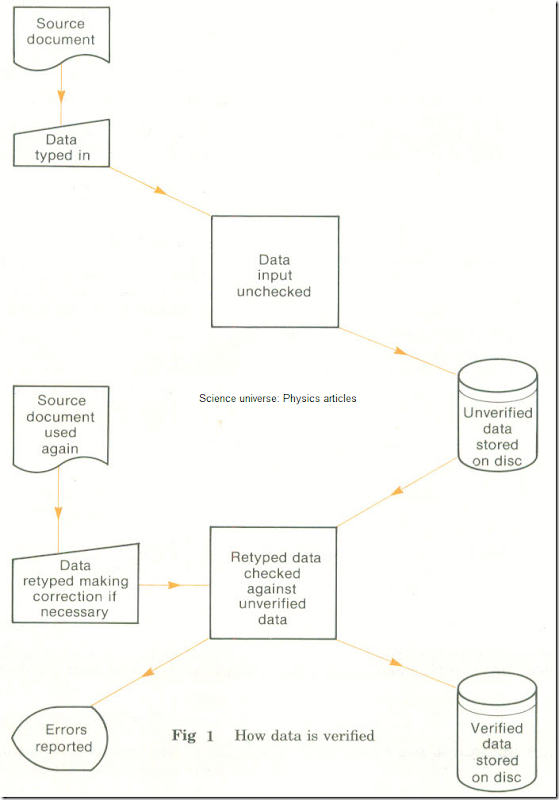DATAPREPARATION AND INPUT
An input device is a peripheral which accepts data and sends it to the central processing unit.
Data presented to an input device has to be in the right form for the device (e.g. a bar code reader will only read bar codes), The input device converts the data into a binary form which the central processor can accept.
Examples of input devices
1 The keyboard of a microcomputer.
2 A light pen.
3 An electronic digital weighing scale interfaced to a computer.
4 A document reader.
Fig 1 How data is verified
PREPARATION AND VERIFICATION
For some types of input the data is handwritten on forms. It has to be typed on to disc or some other input medium by a keyboard operator. Then it has to be checked to see if the typing is accurate. Then it is ready to be read by an input device.
Data is originally written on a form called a source document. The process of typing the data on to an input medium is called data preparation .
Checking the data to see that it has been typed correctly is known as verification ).
How data is verified
When the data has been prepared the source documents from which it was typed are passed to another operator. This second operator retypes the data. However, this time the data is not encoded on to the input medium. Instead the equipment simply checks that the new data typed is the same as the data already there. The characters are retyped correctly if necessary. Note: The data could be verified by simply reading through what has been typed to see if it looks right. However, this method is not accurate enough for commercial work.

